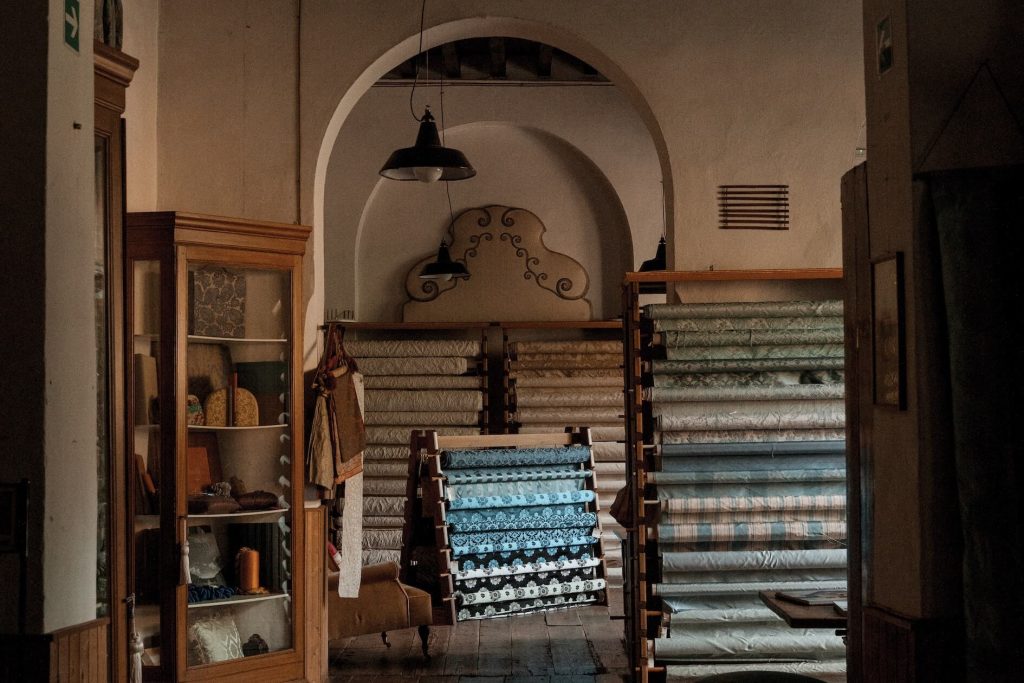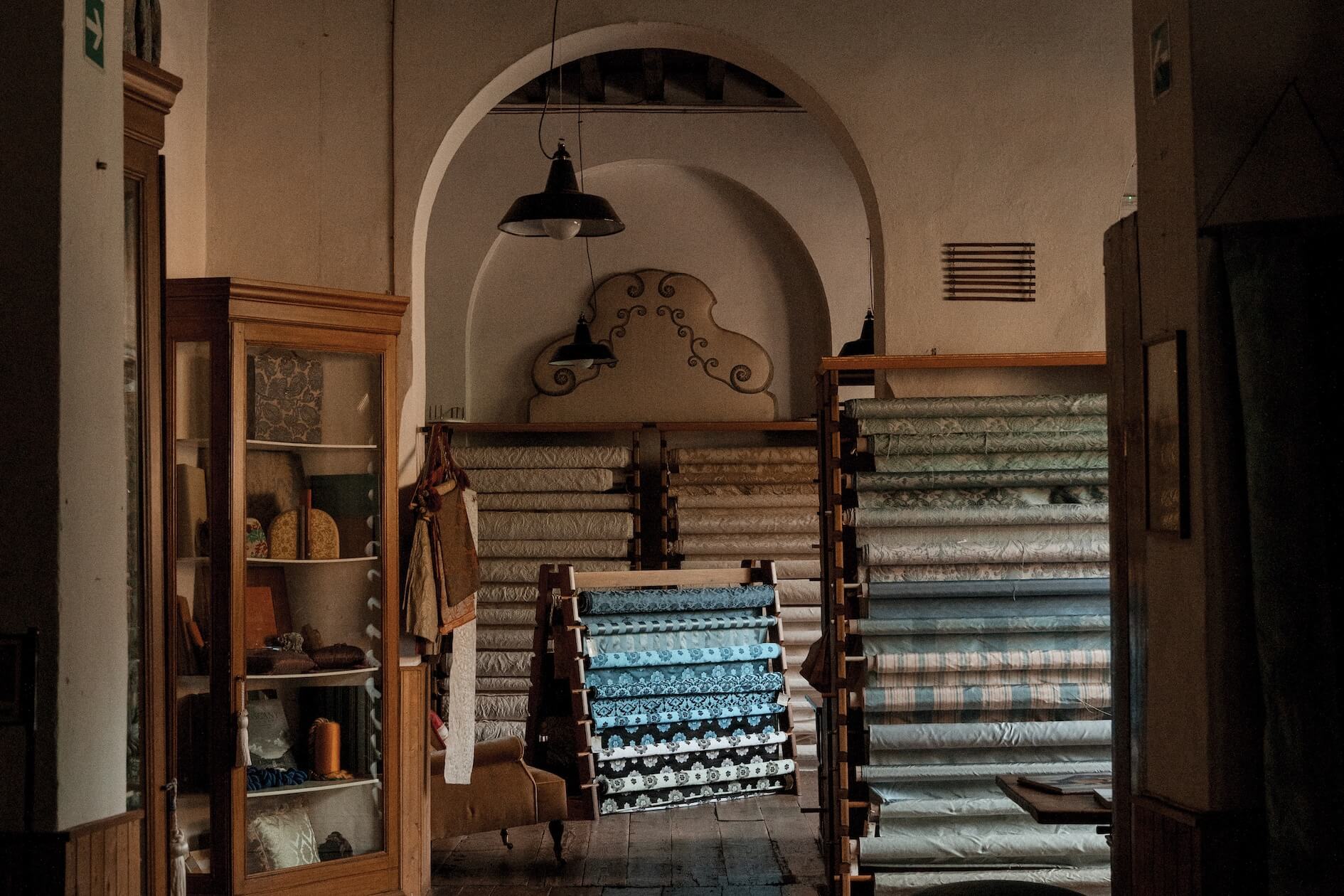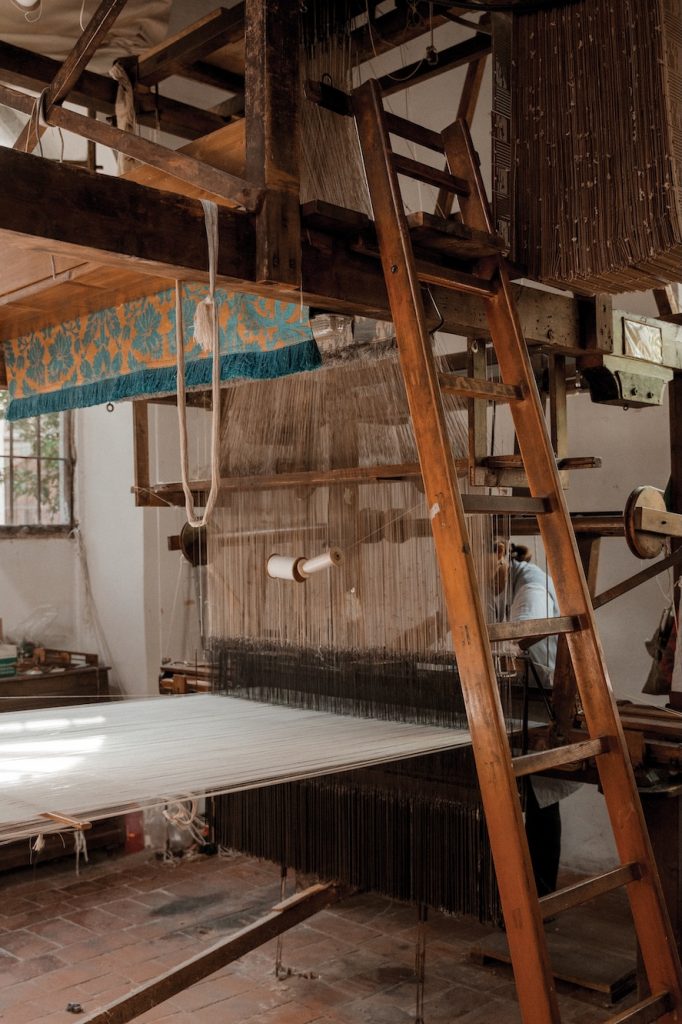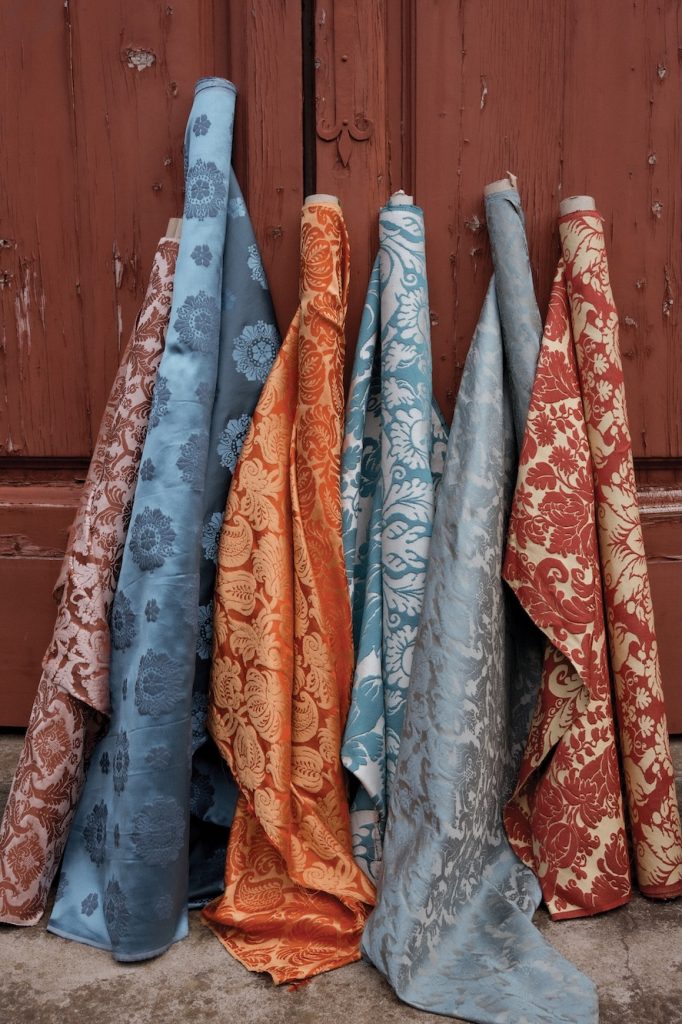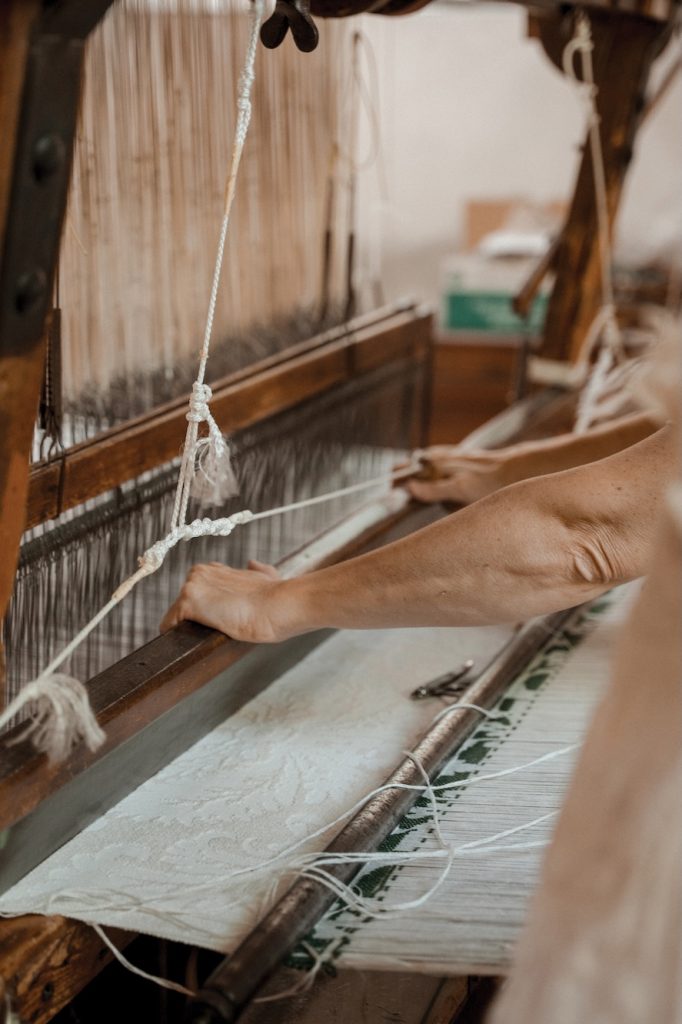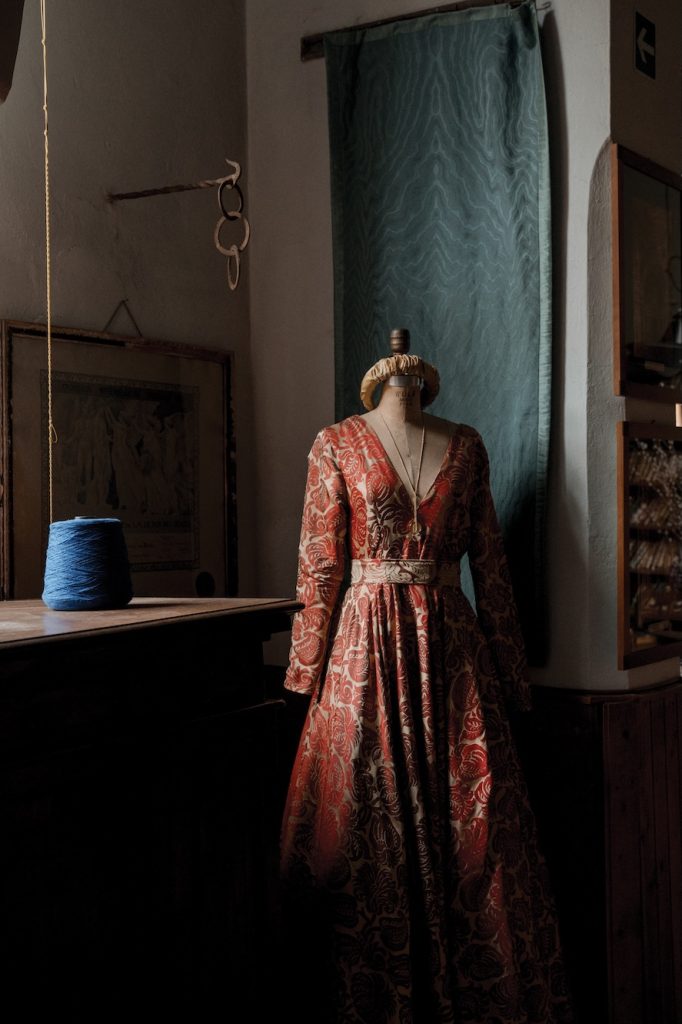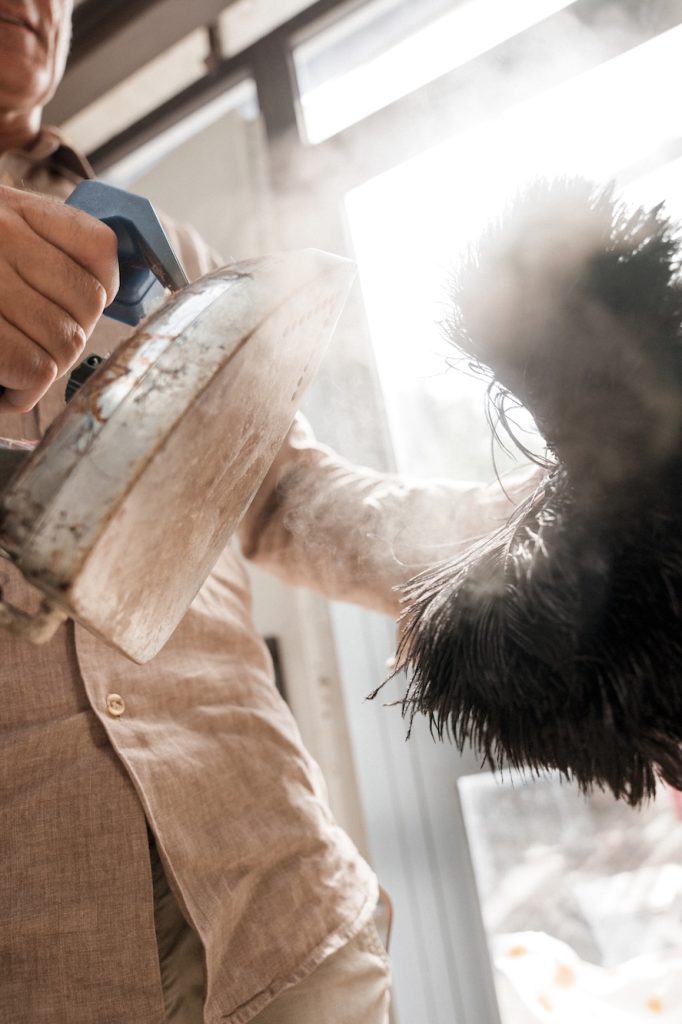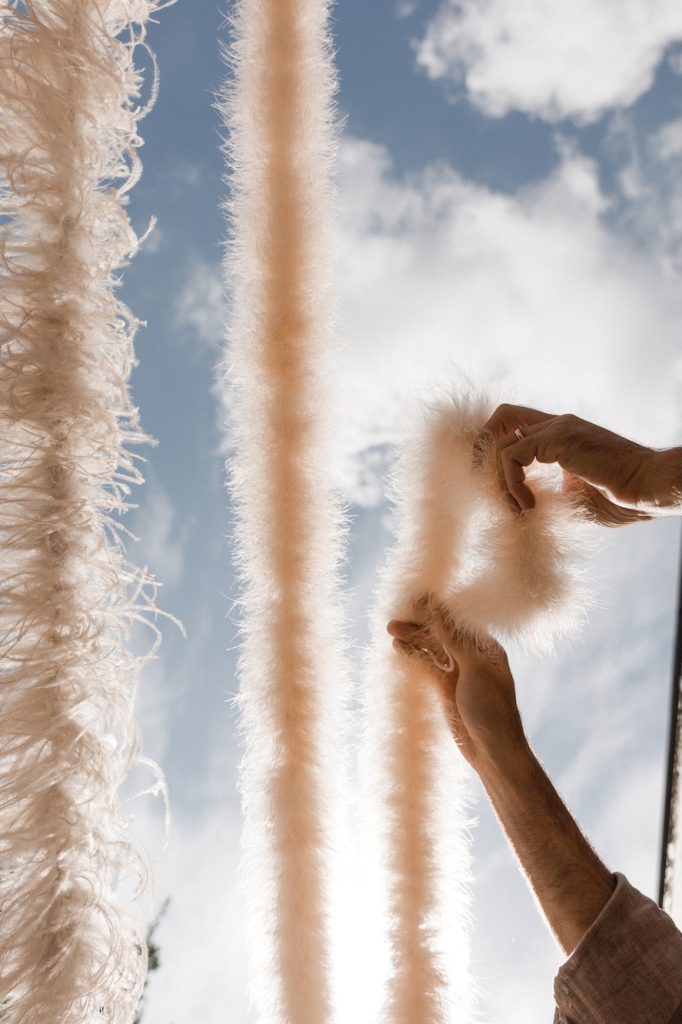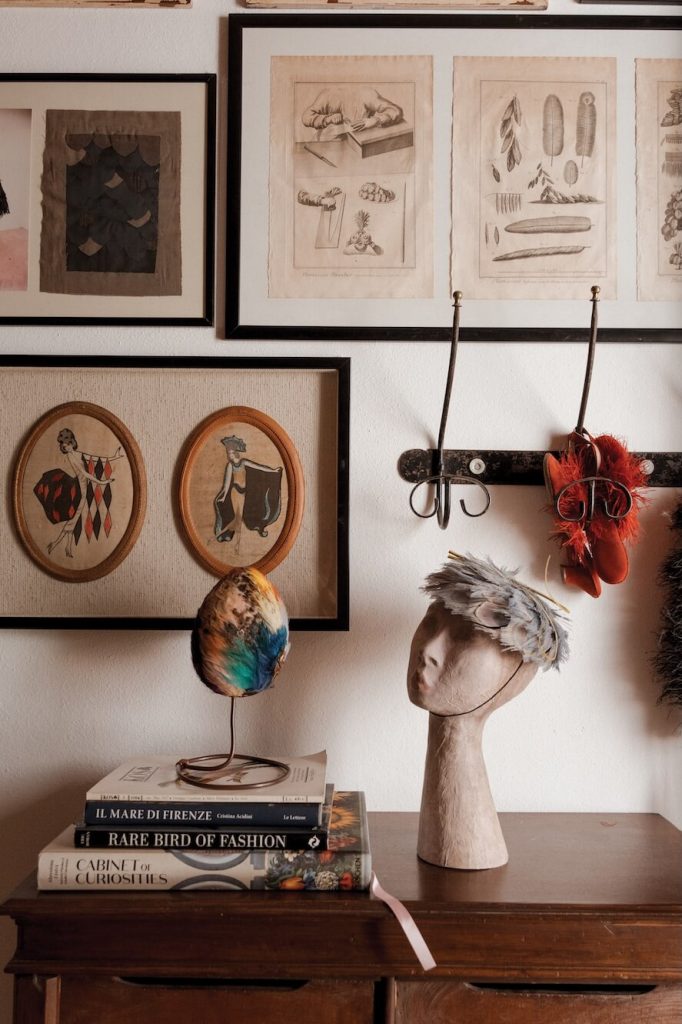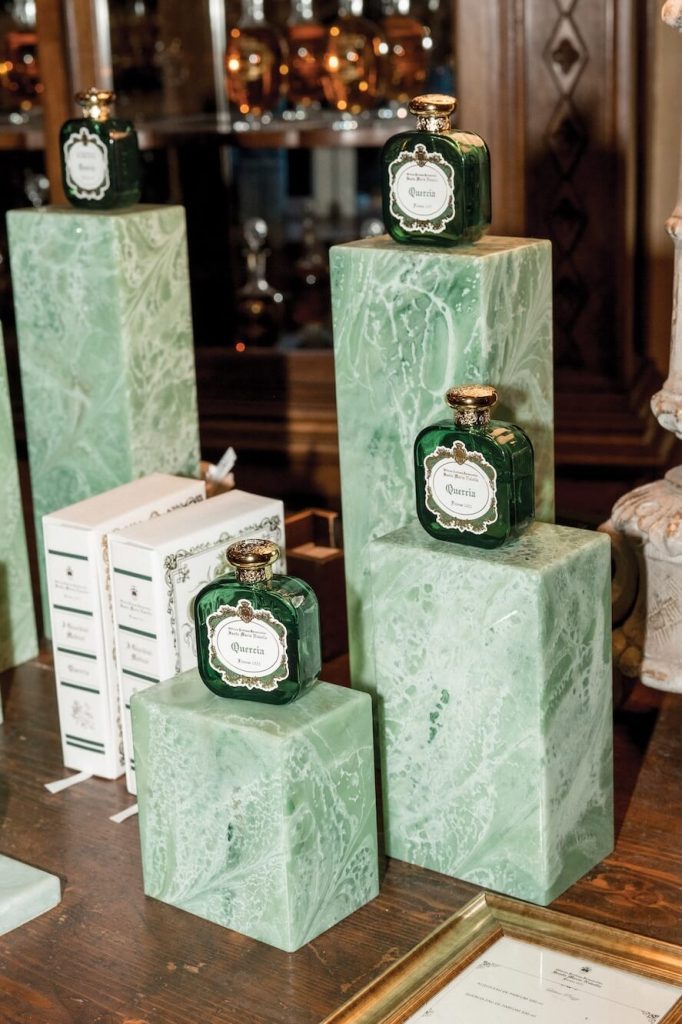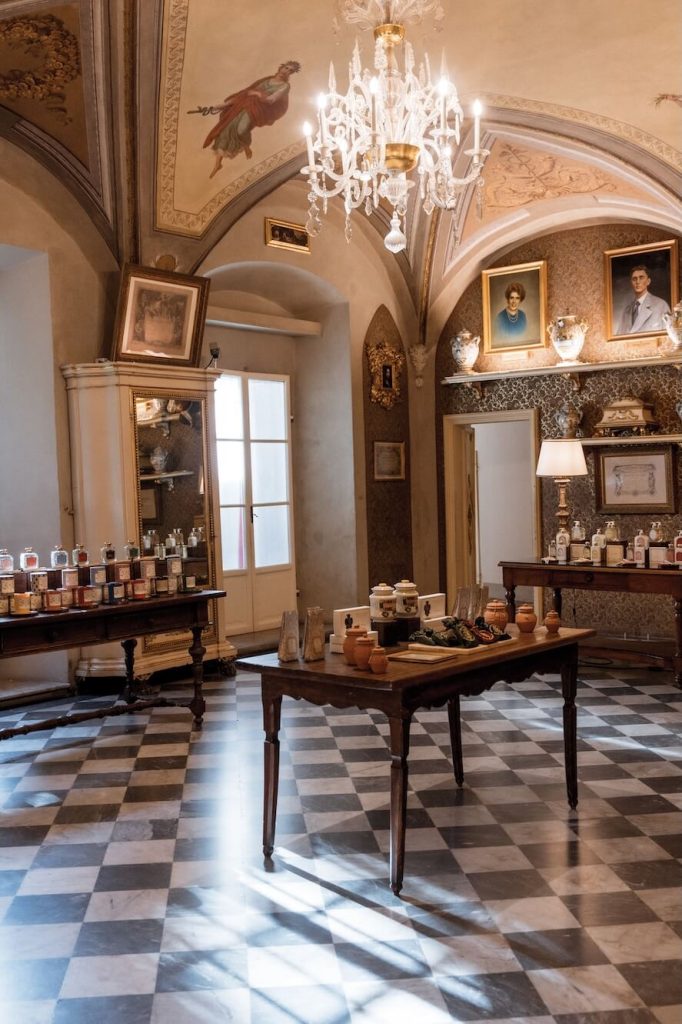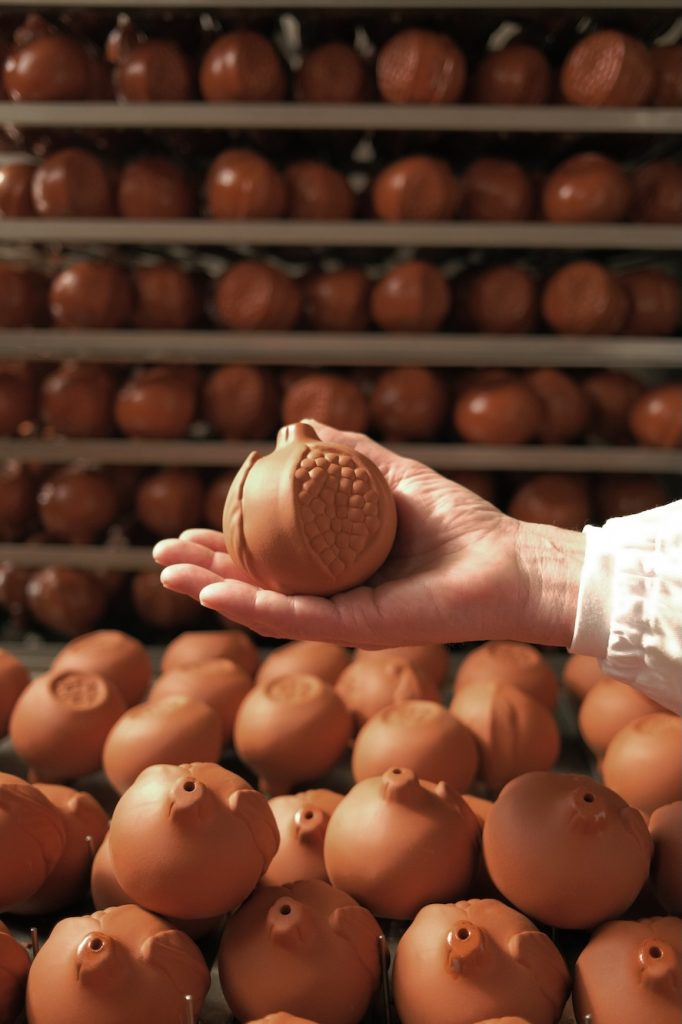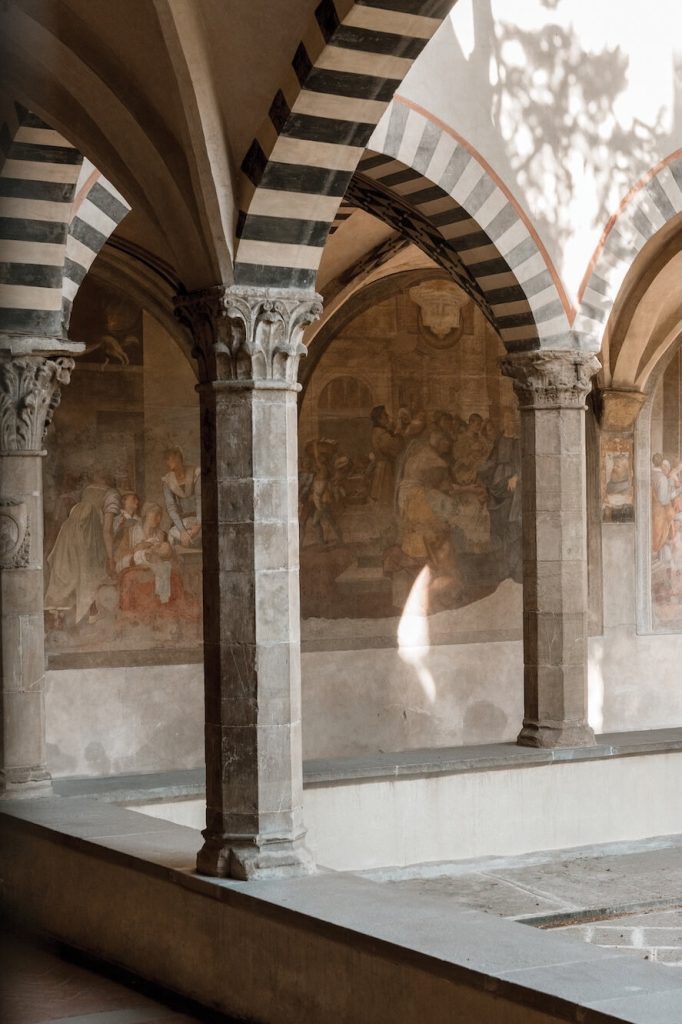Florence is known for its Renaissance cathedrals, majestic architecture, and works by great masters such as Leonardo di Vinci. But some of its most significant treasures are hidden from plain view: the city’s artisan workshops—many of them centuries old—producing unrivaled crafts by a new generation of masters.
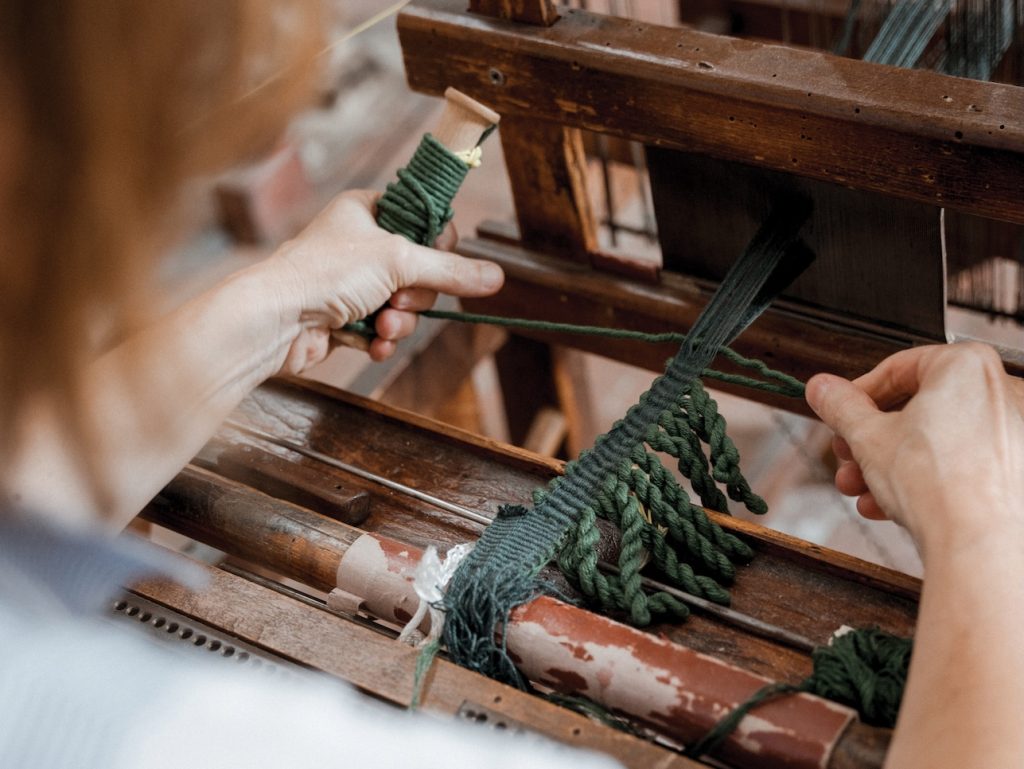
Because Florence is a place where ancient craftsmanship is still revered, age-old skills are kept alive from one generation to the next, passed down in time-honored traditions—and no tour of the city would be complete without a visit to its hidden jewels, from its handwoven silk textiles and delicate feathers to its exquisite gold leaf and evocative fragrances.
Antica Setaficio’s handmade tassels, commissioned by international interior designers.

Antico Setificio Fiorentino
In 1786, a group of noble families—della Gherardesca, Corsini, and Agresti among them—established Antico Setificio to collectively house their looms and precious fabric designs. Today, it remains in the same storied location, where artisans work on 200-year-old looms to create luminous silk fabrics, brocades, and textiles that have graced the homes of European royalty and aristocrats for centuries. In 2010, Florentine Stefano Ricci, known for his luxury menswear brand and patronage of his home city, purchased the workshop to preserve its quality textiles, which are available by special order.

Mazzanti Piume
Since 1935, Mazzanti has been transforming feathers and silk flowers into precious accessories. It’s a skill that requires tremendous patience, artistry, and imagination. “My father and I try to harmoniously mix tradition and innovation using the same artisan techniques passed down with passion for three generations,” says Duccio Mazzanti, whose grandmother founded the business. It takes years for apprentices to master the specialized skill of working with feathers, which today are used in the accessories of global fashion houses.

Giusto Manetti Battiloro
For 15 generations, the Manetti family has transformed pure gold into precious leaves for use in architecture, design, and home furnishings. Established in the 1600s, the house, still in the hands of the Manetti family today, has applied its knowledge to the restoration and construction of extraordinary venues, from the Palace of Versailles to New York City’s Rockefeller Building, and more recently, Paris’s Fondazione Prada. Today, the family uses the ancient art of gilding, which applies thin gold leaf to different surfaces, on everything from walls and frames to objects to achieve a painterly, layered, glowing finish.

Santa Maria Novella
Santa Maria Novella’s story begins in 1221, when newly arrived Dominican friars established a convent where they used herbs and flowers to create remedies. After a rich merchant was healed by their tinctures, he thanked the religious sect by building the San Niccolò–devoted chapel, which today houses the brand’s beloved range of personal and home products. Everything is still made in its Florentine atelier, using many of the original botanical recipes that drew devotees like Catherine de Medici (who commissioned her own signature scent, Acqua Della Regina, still sold at the house today).
